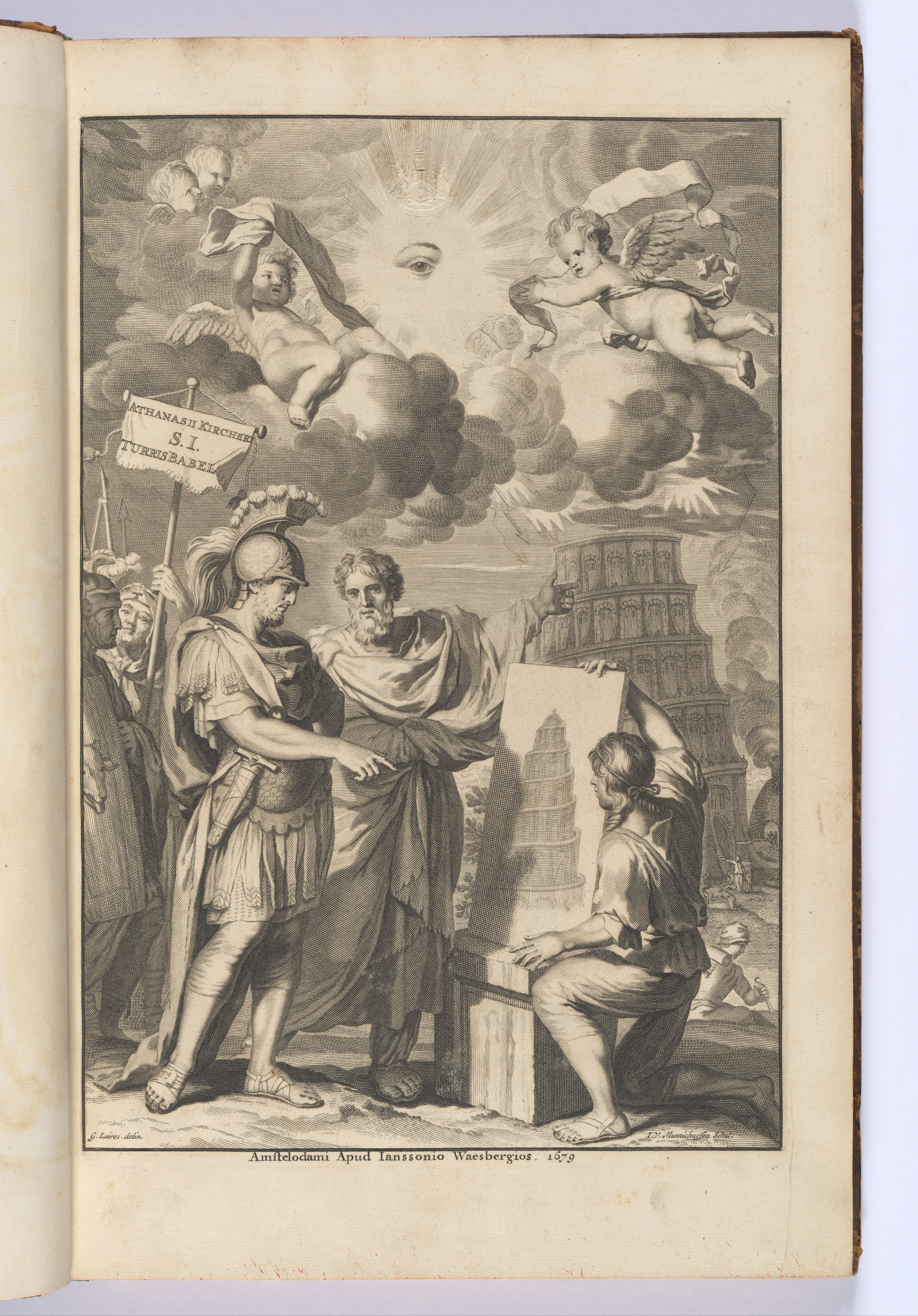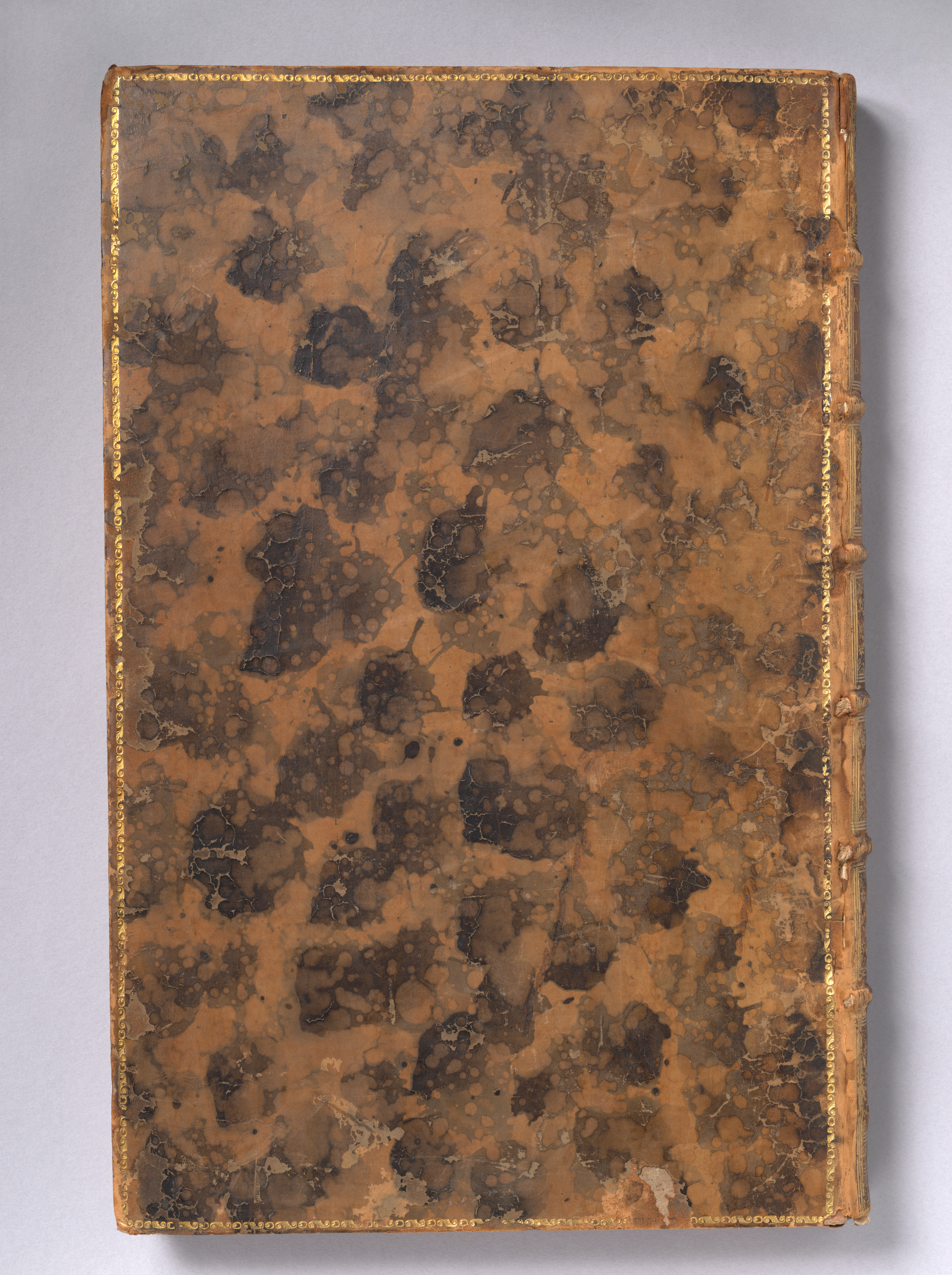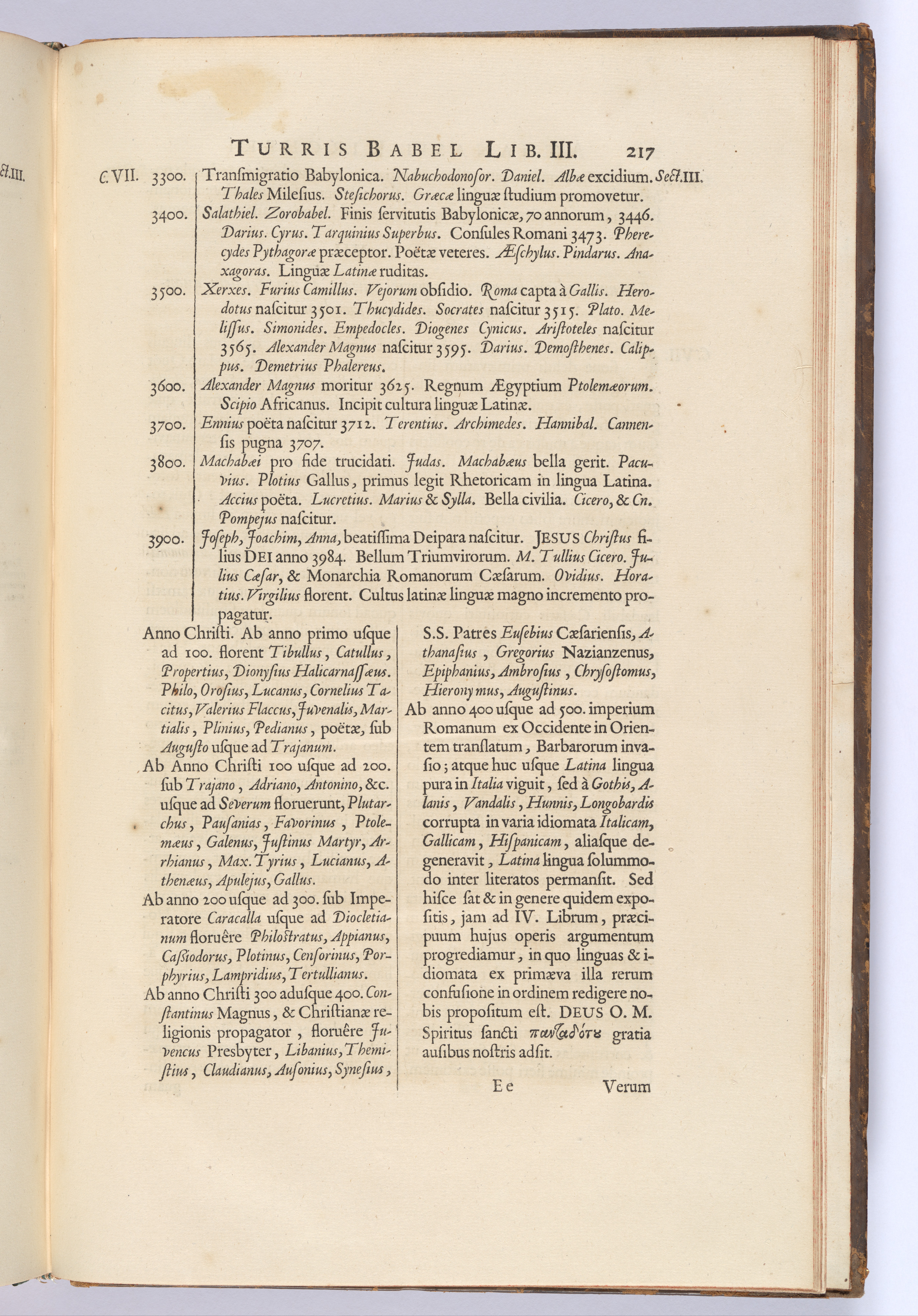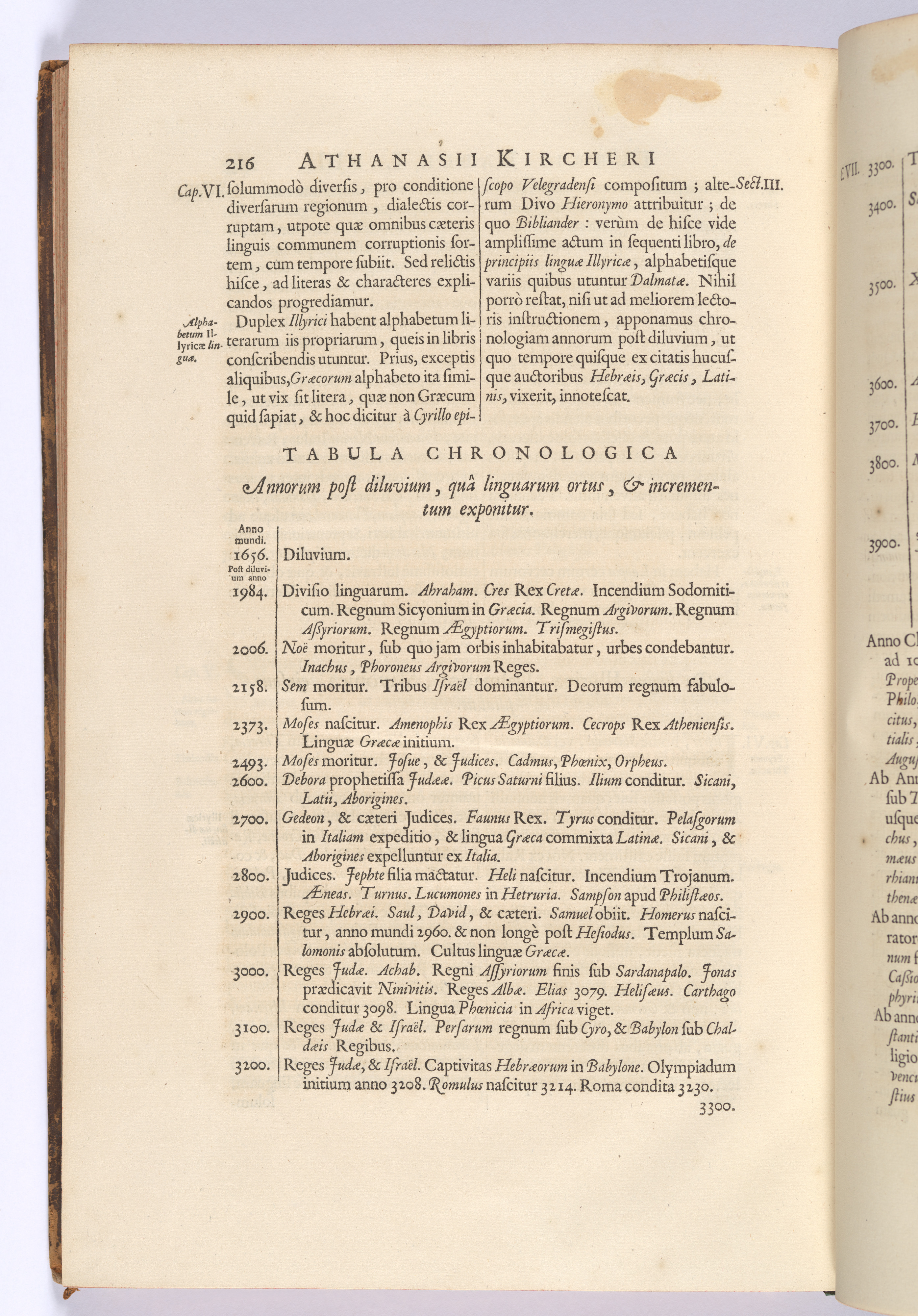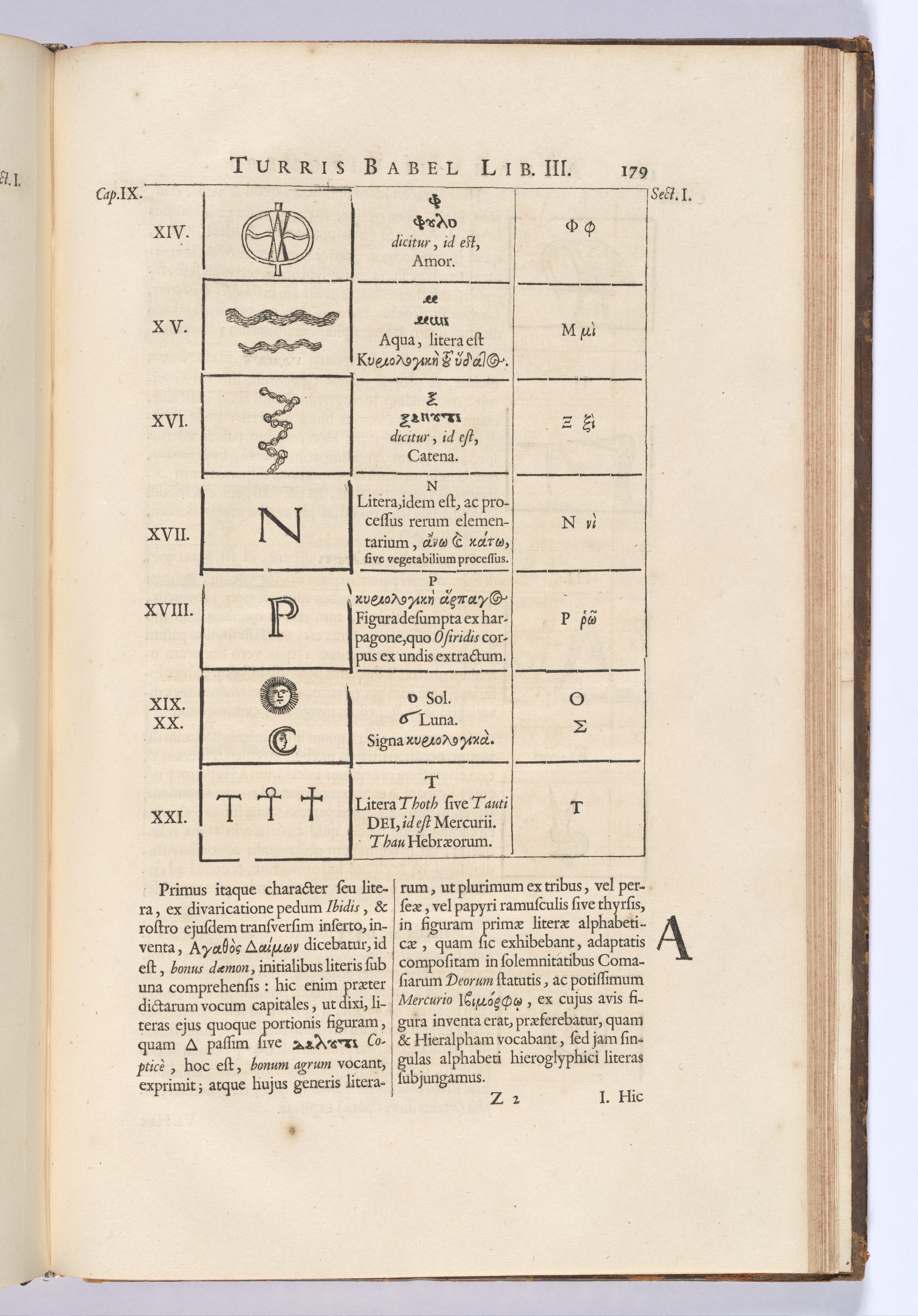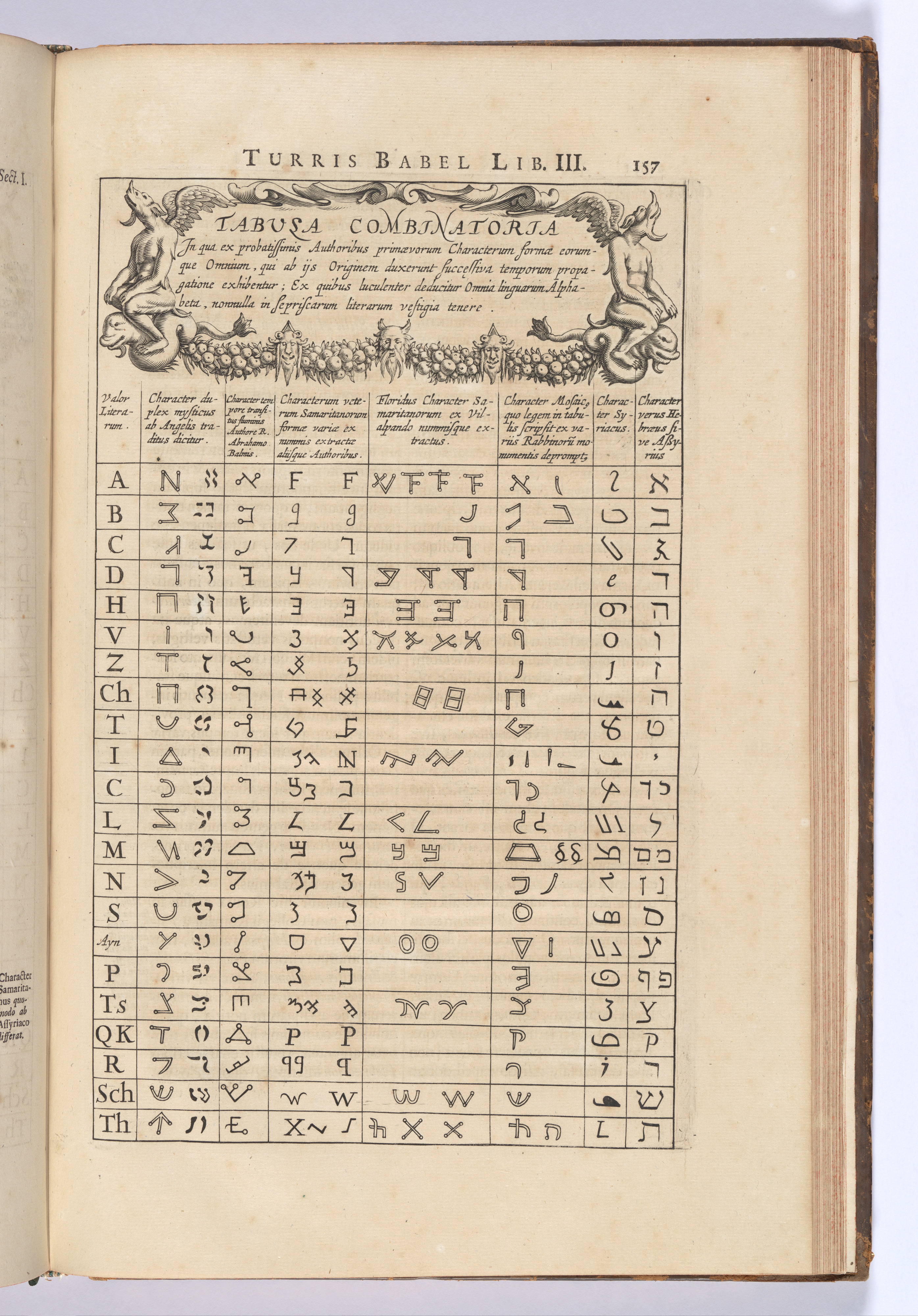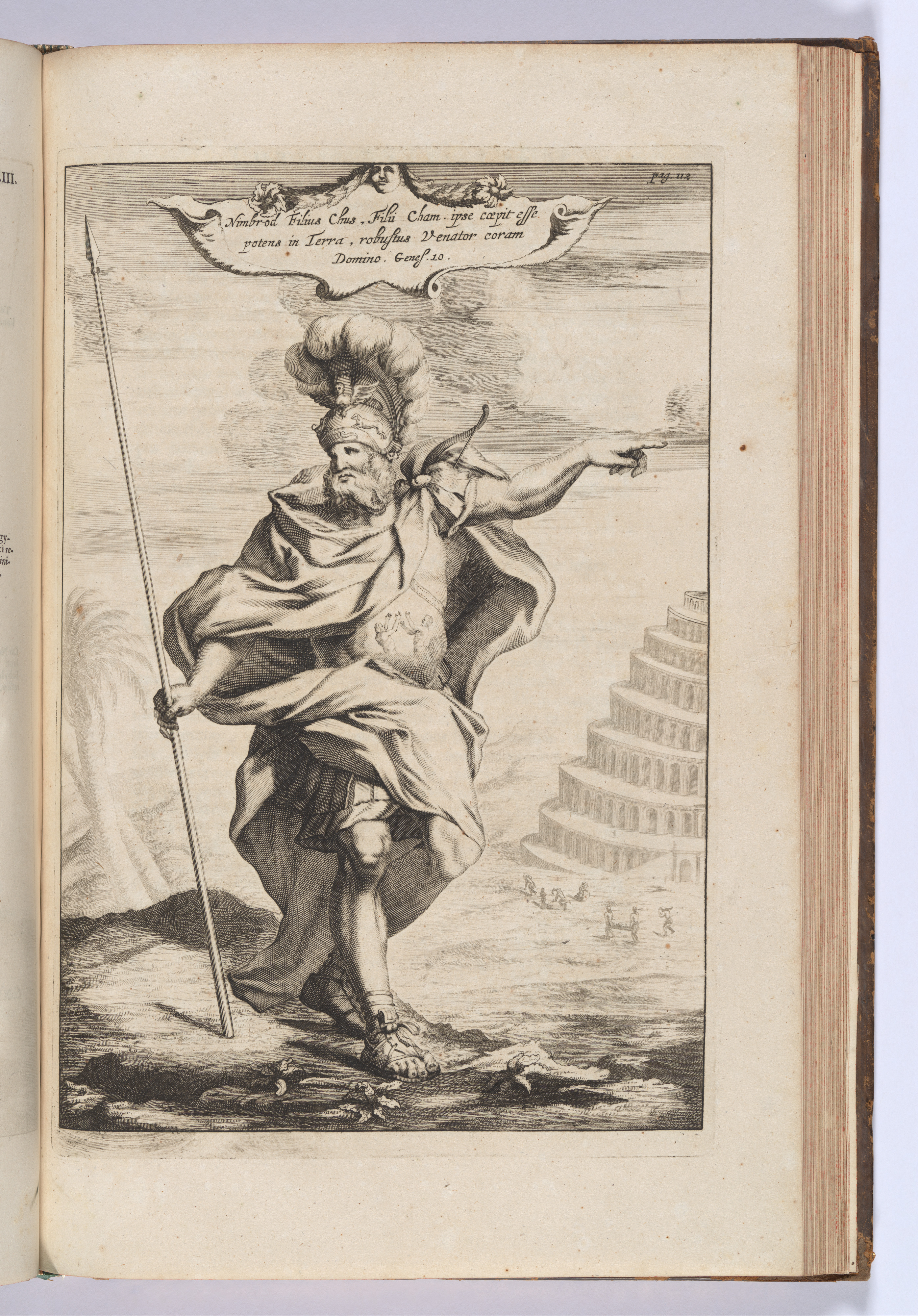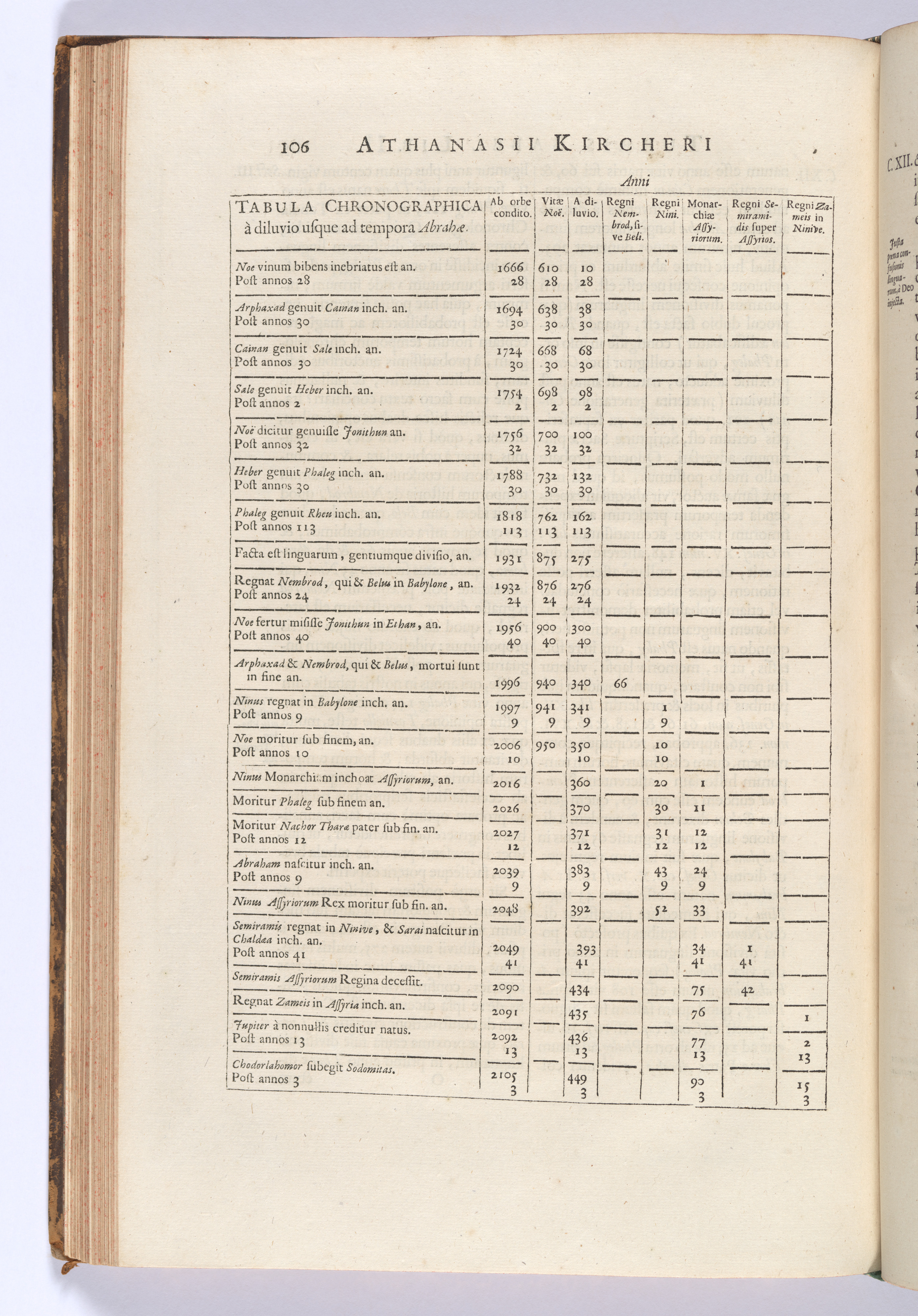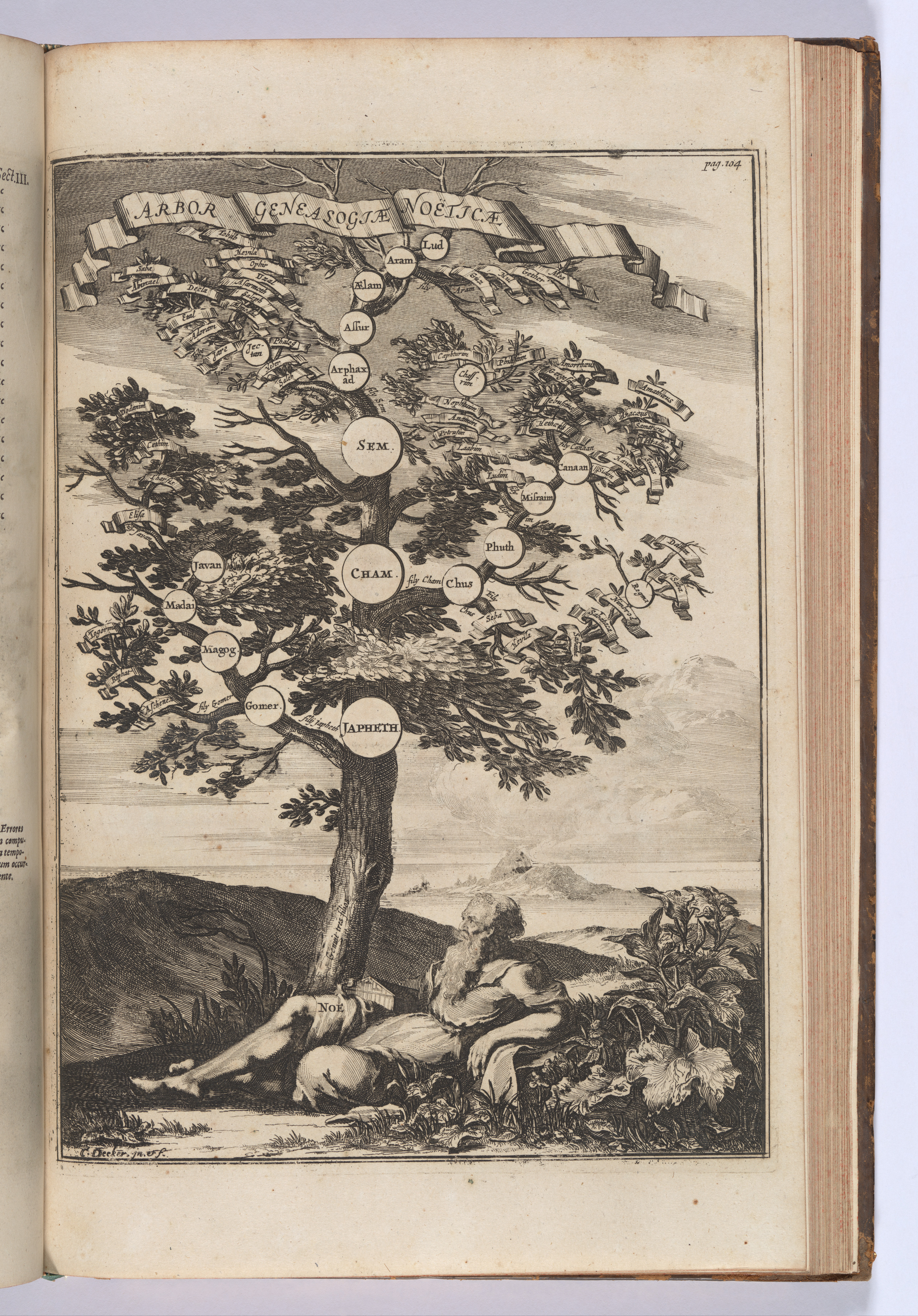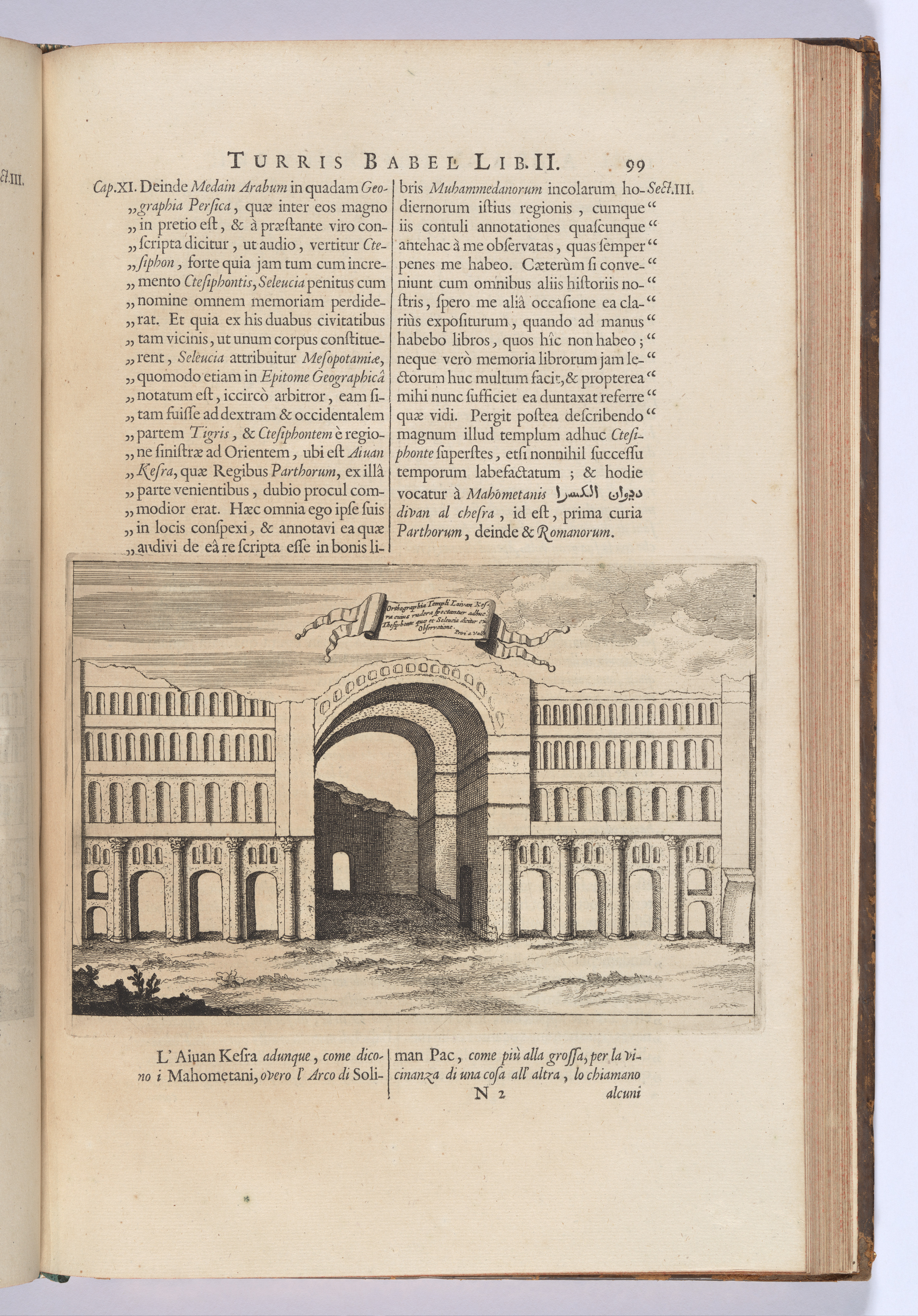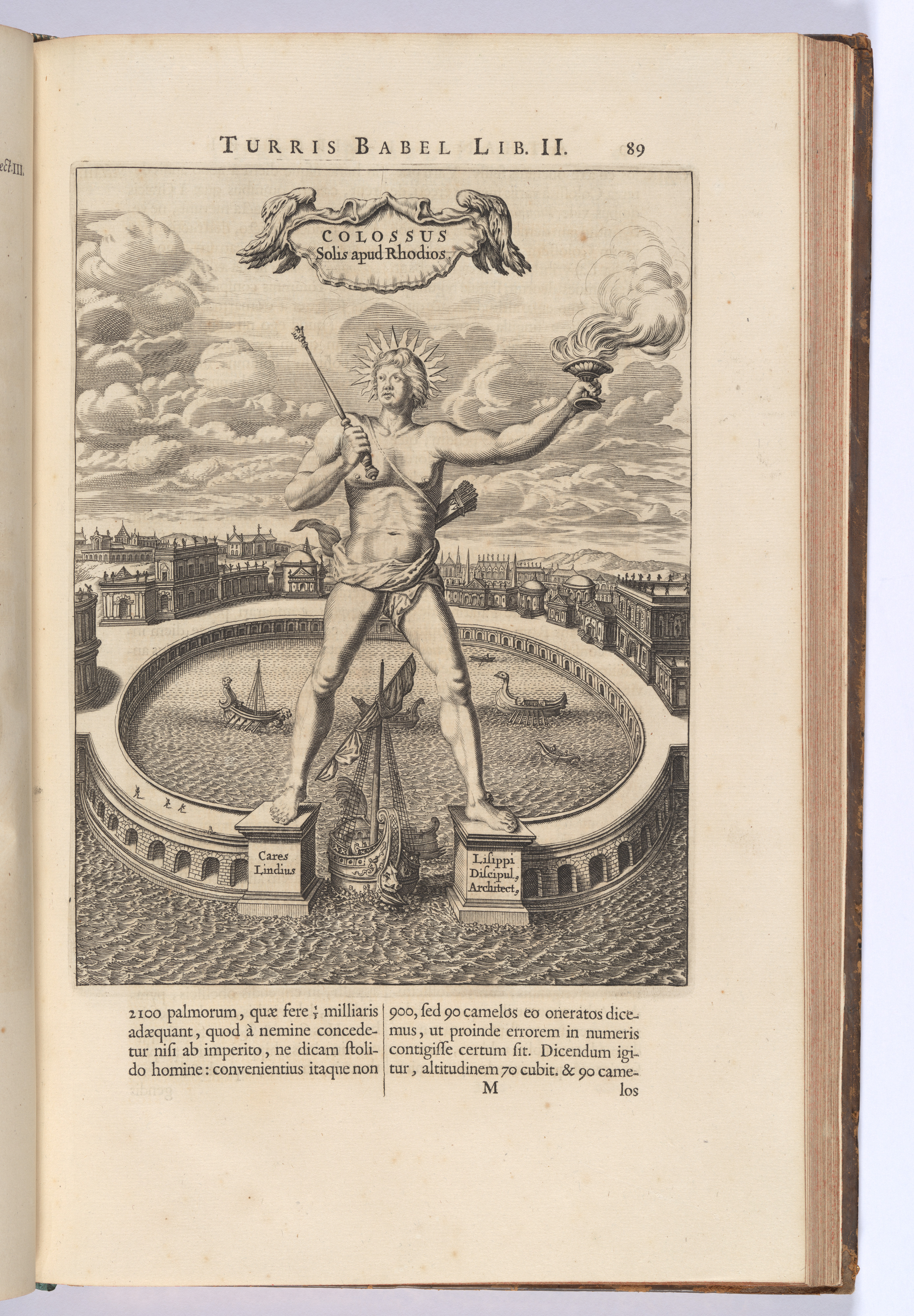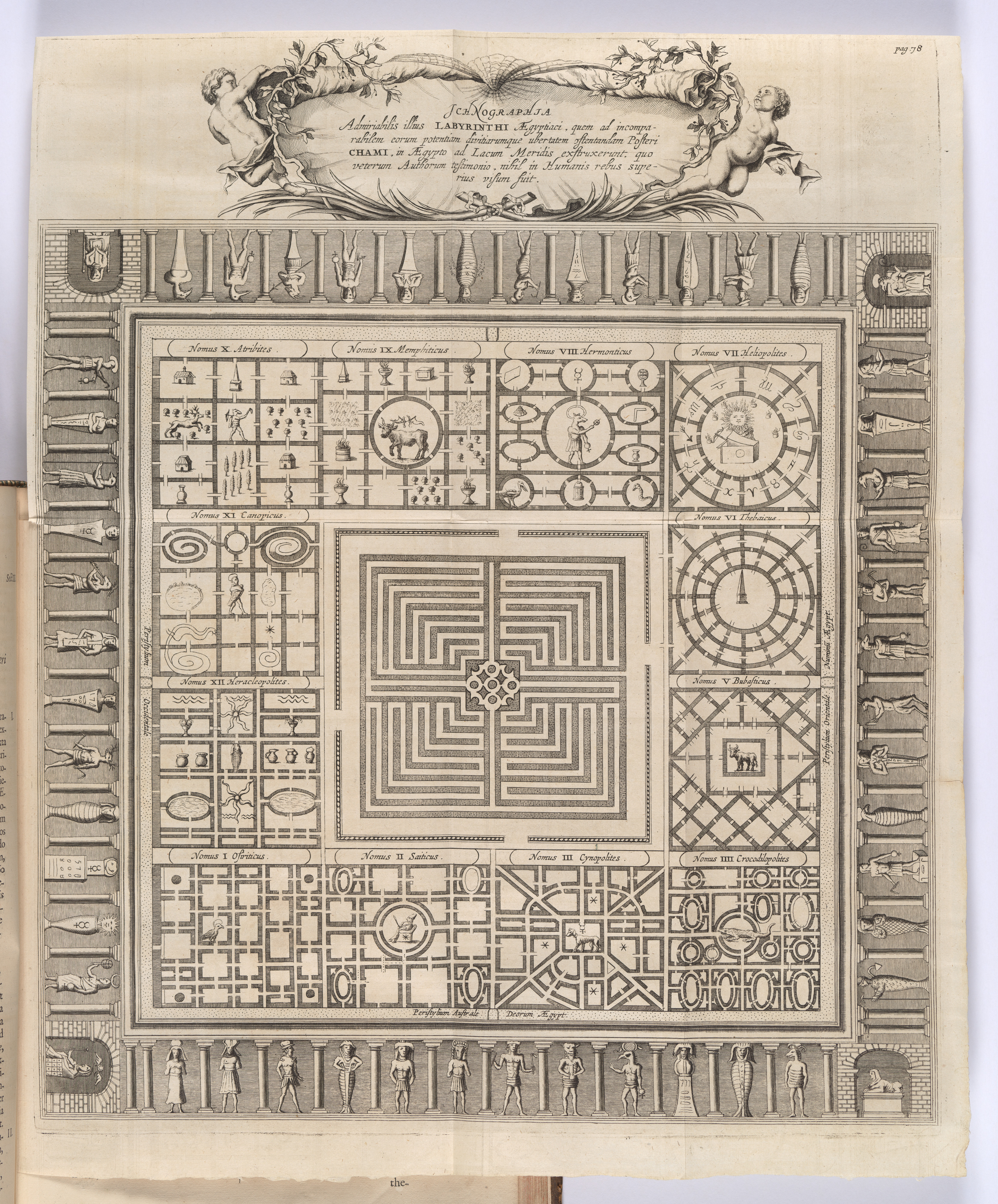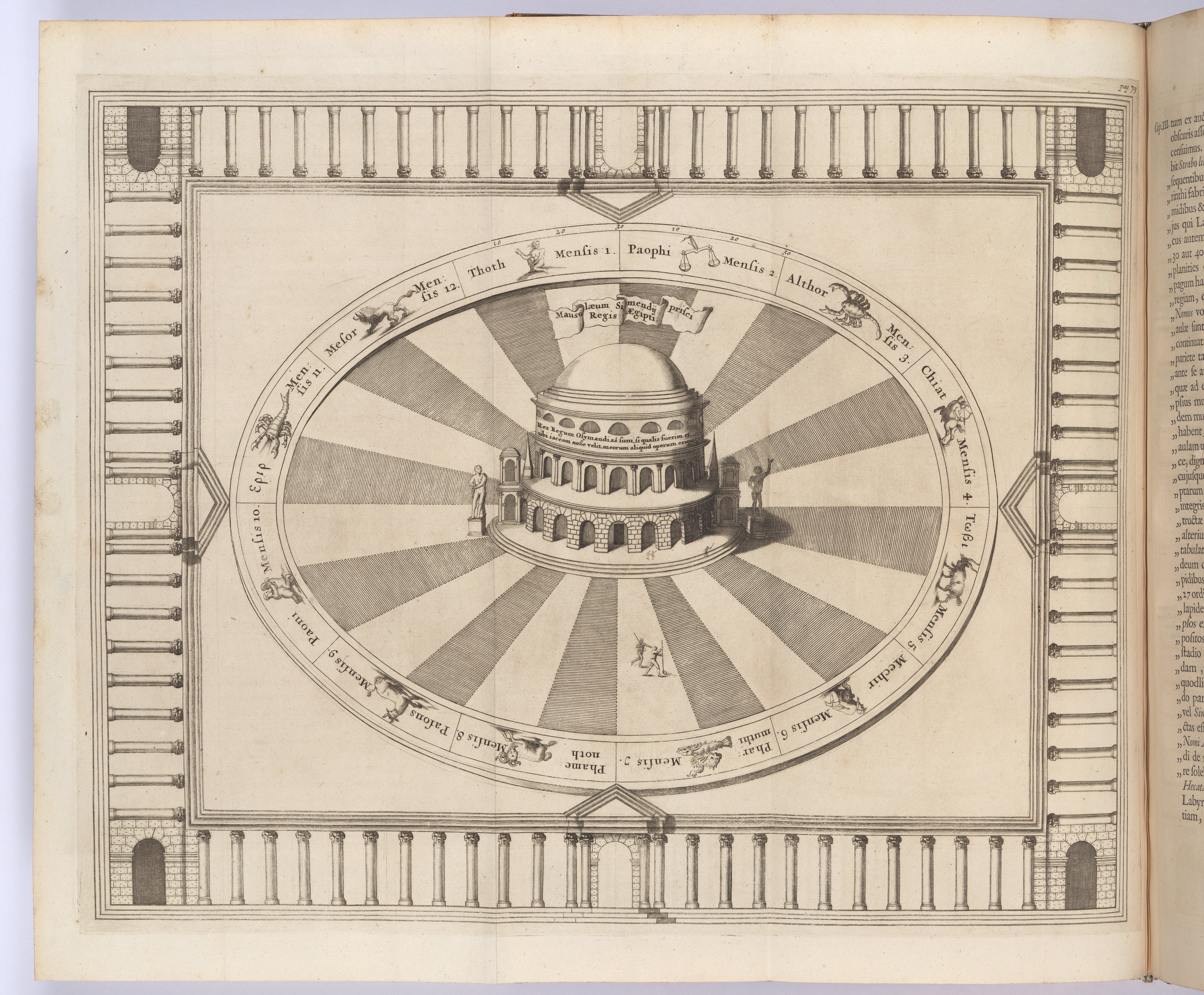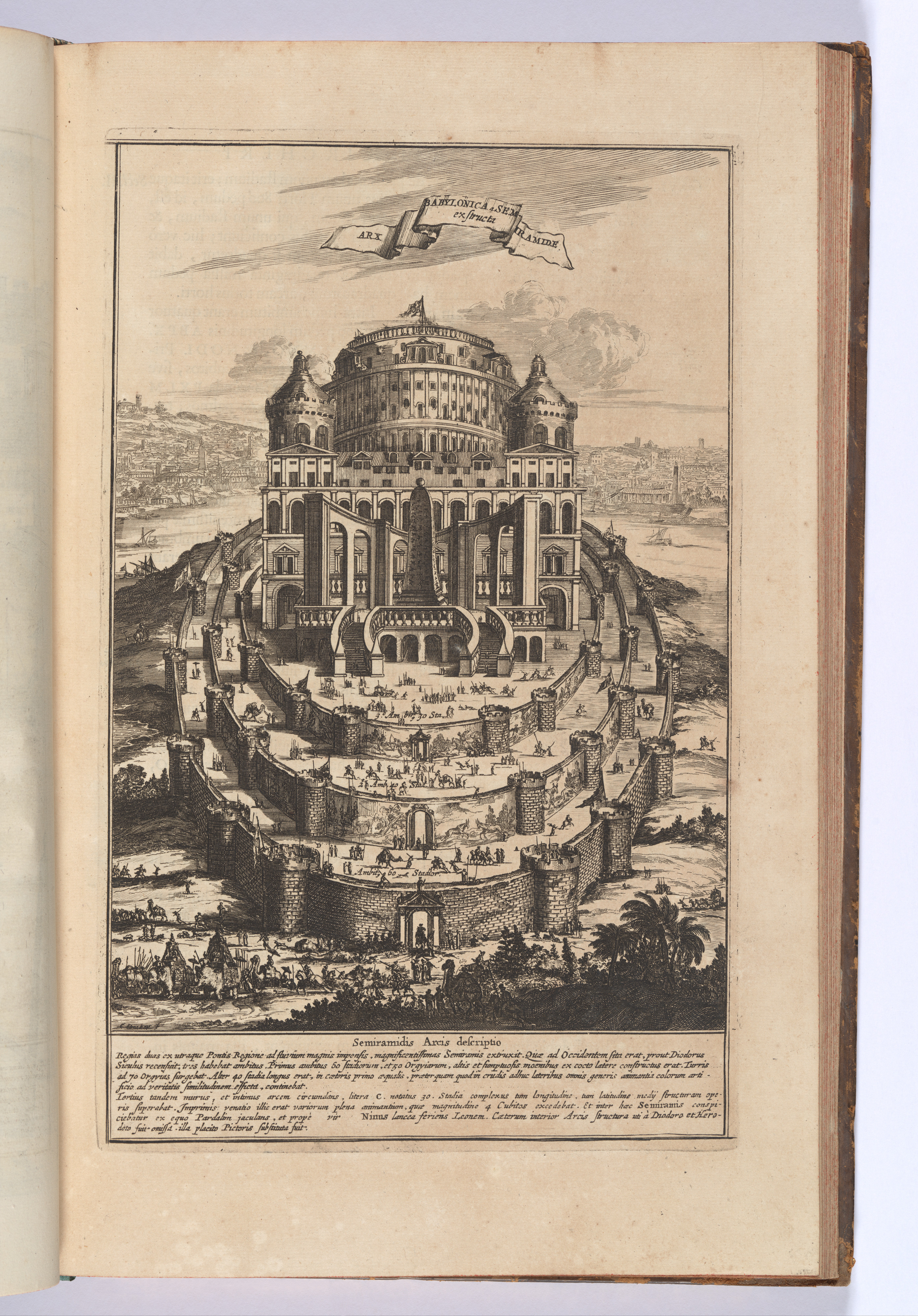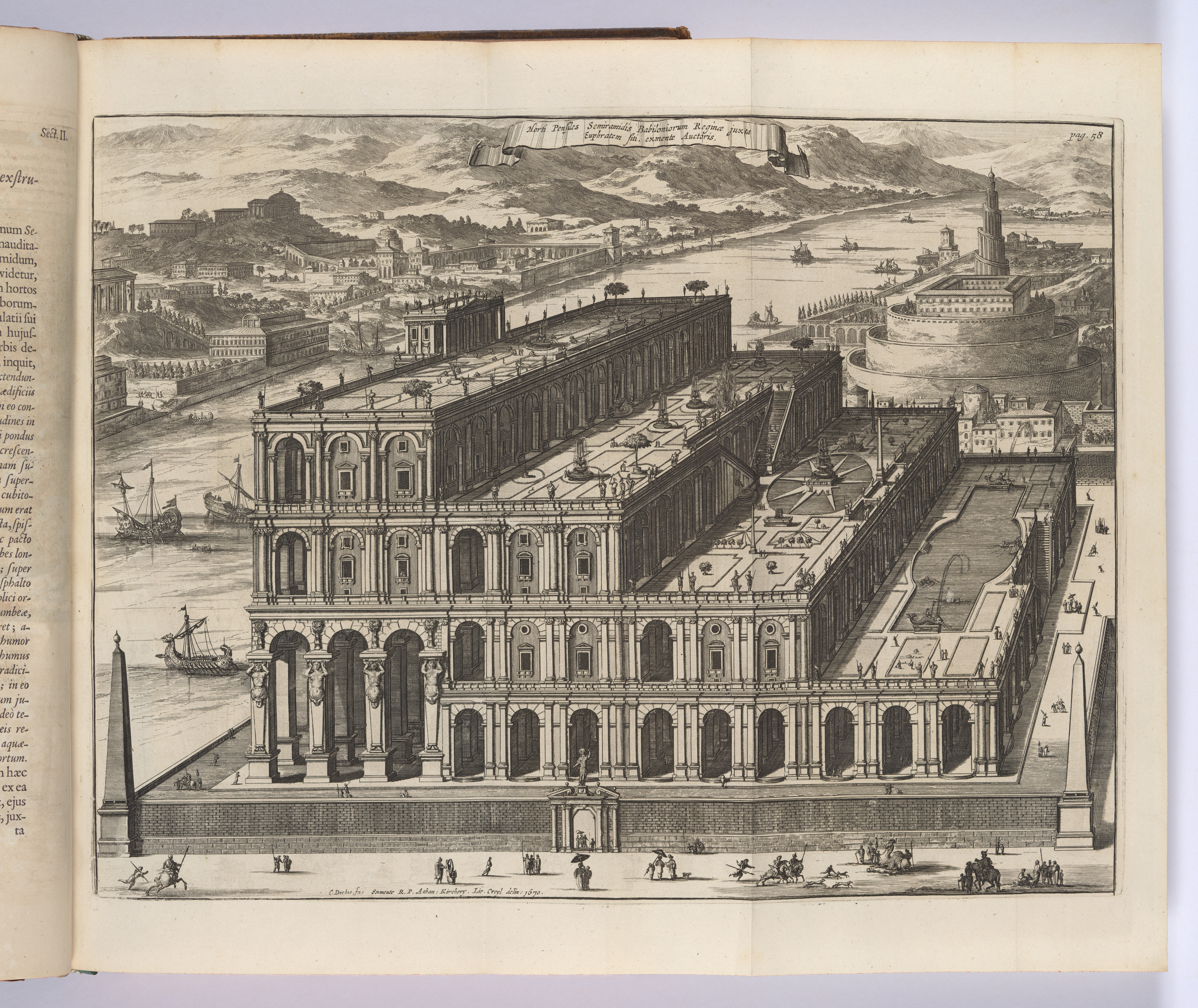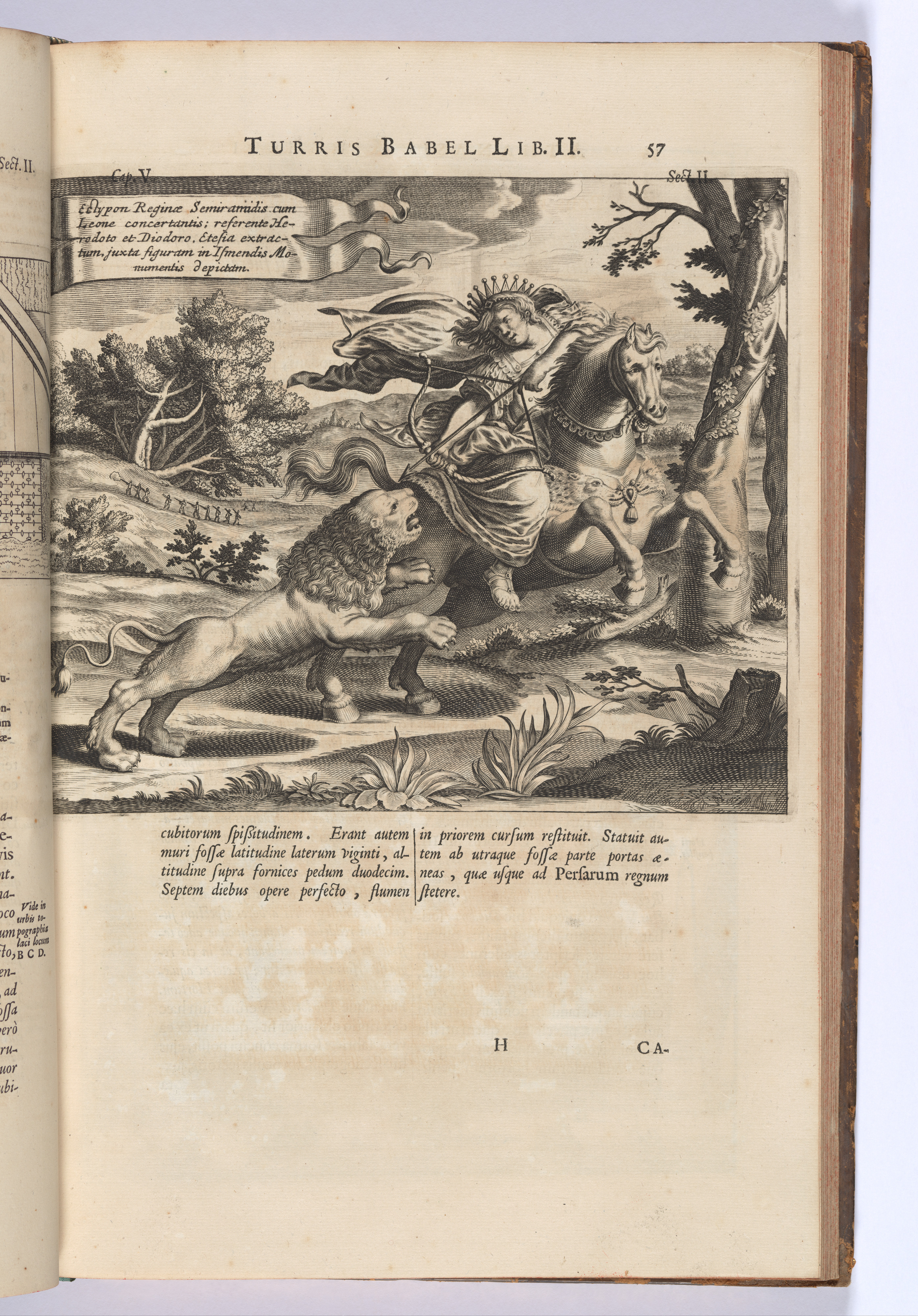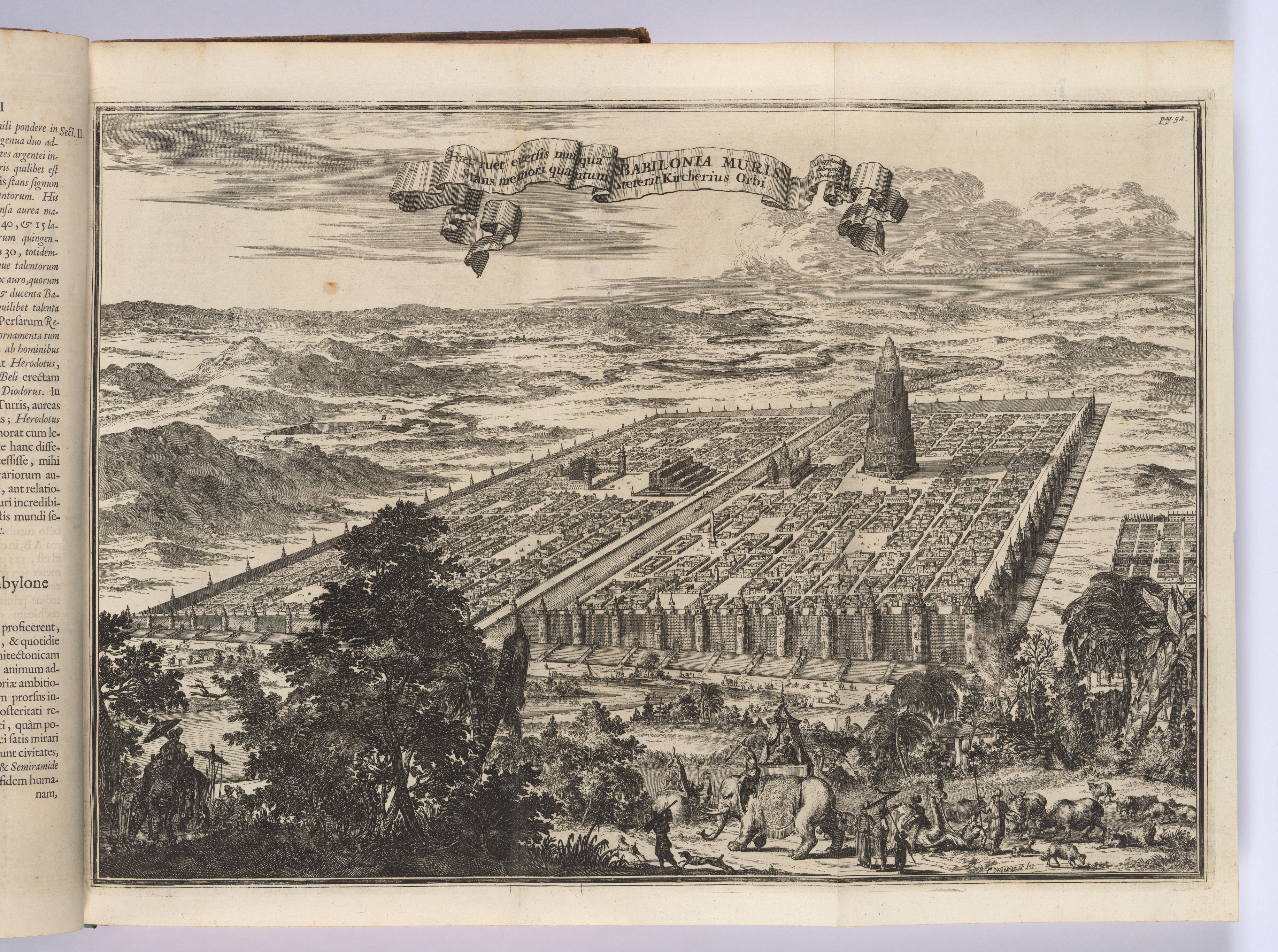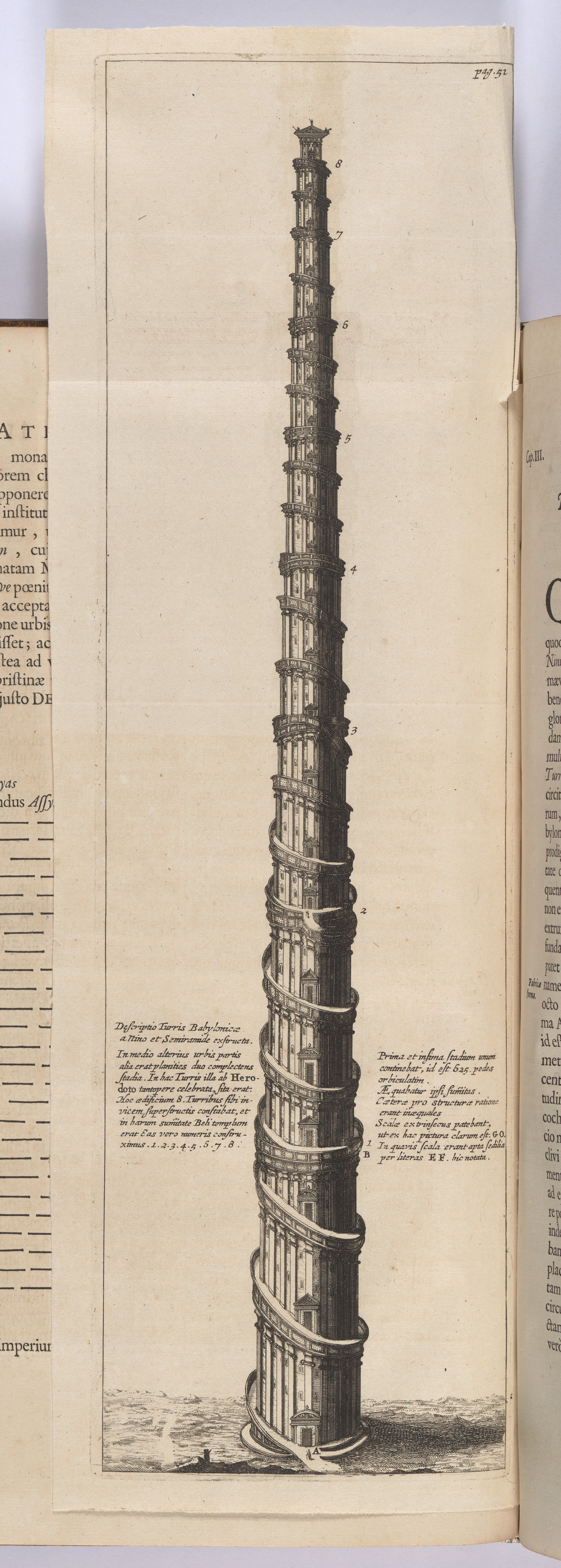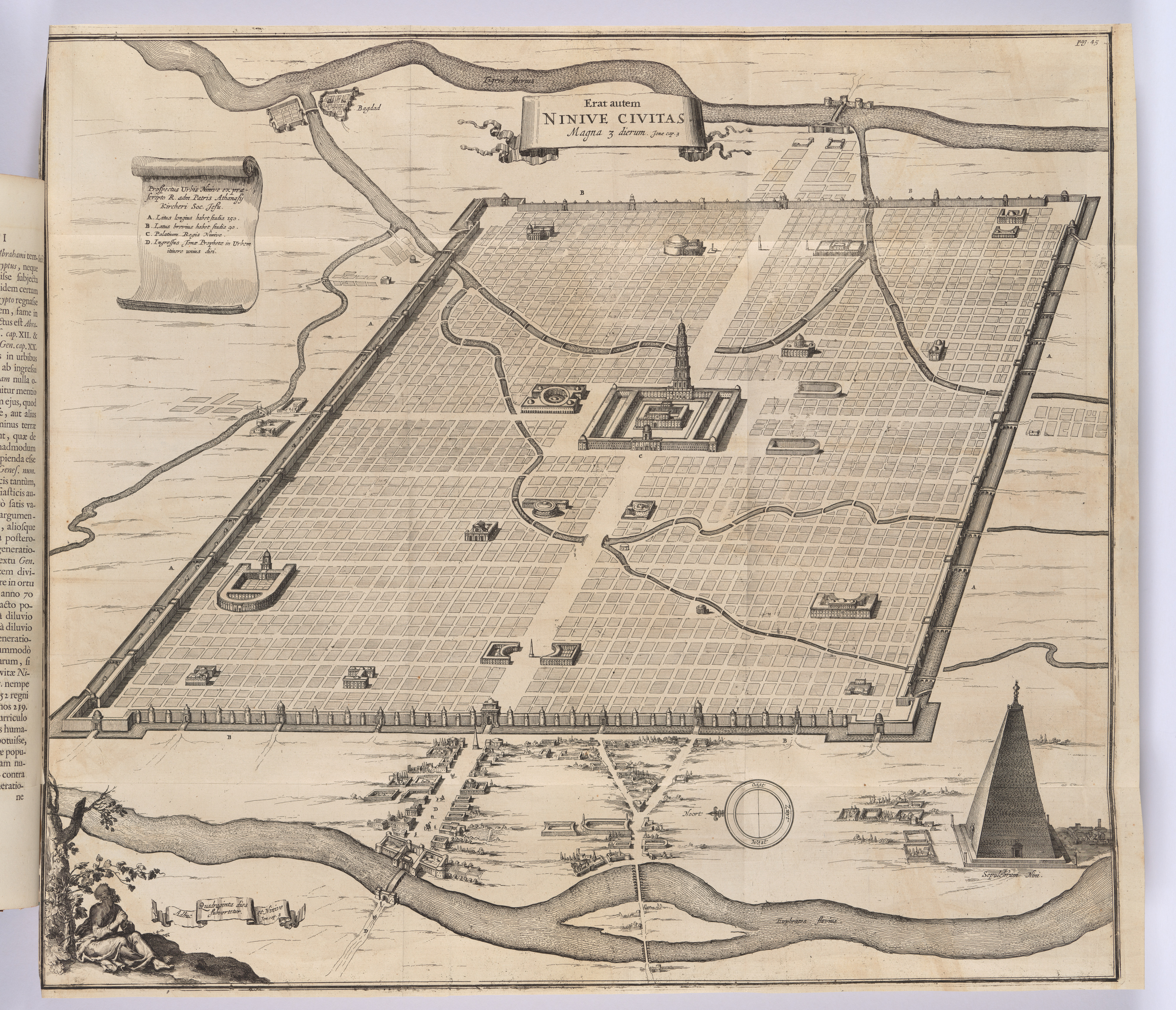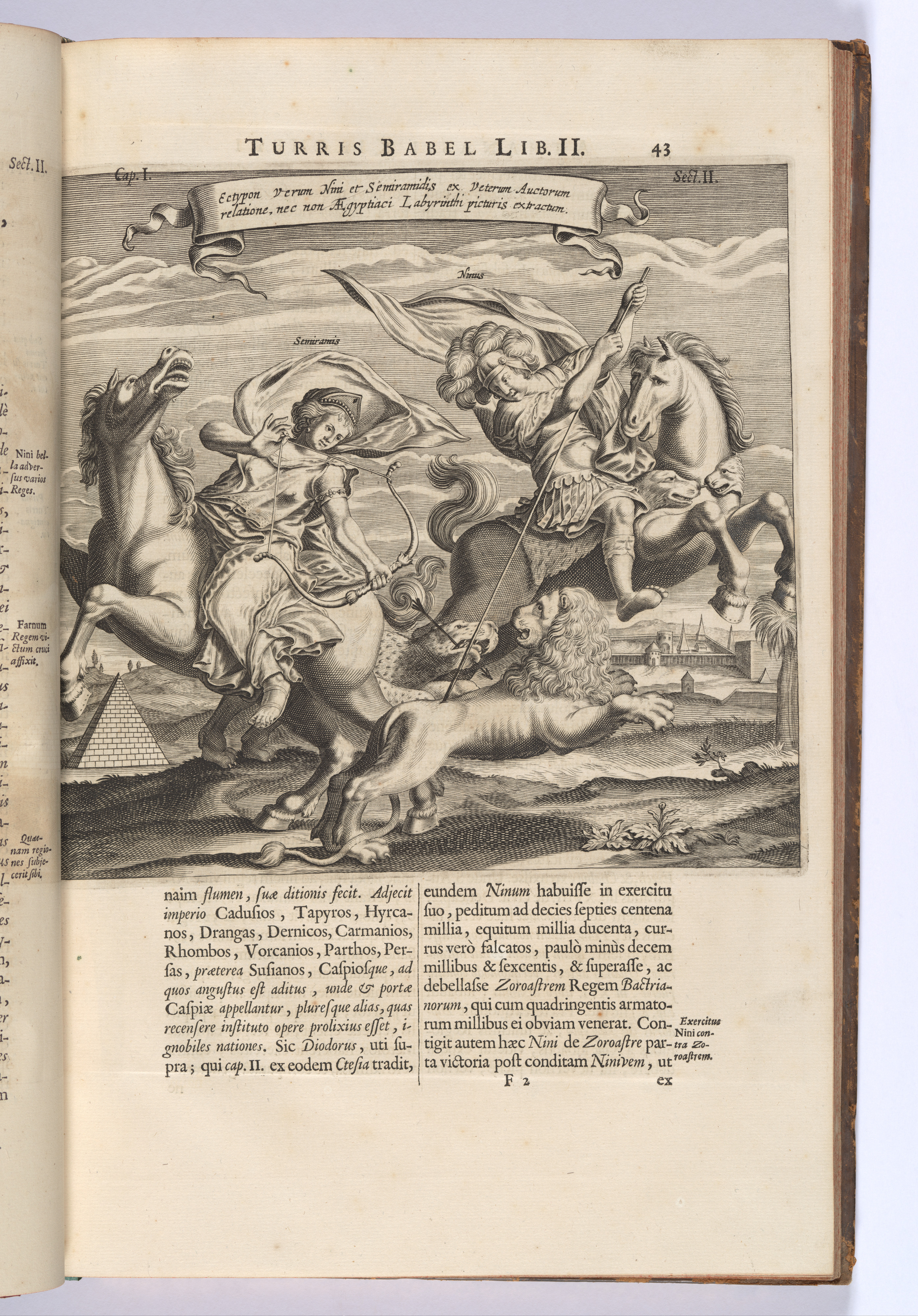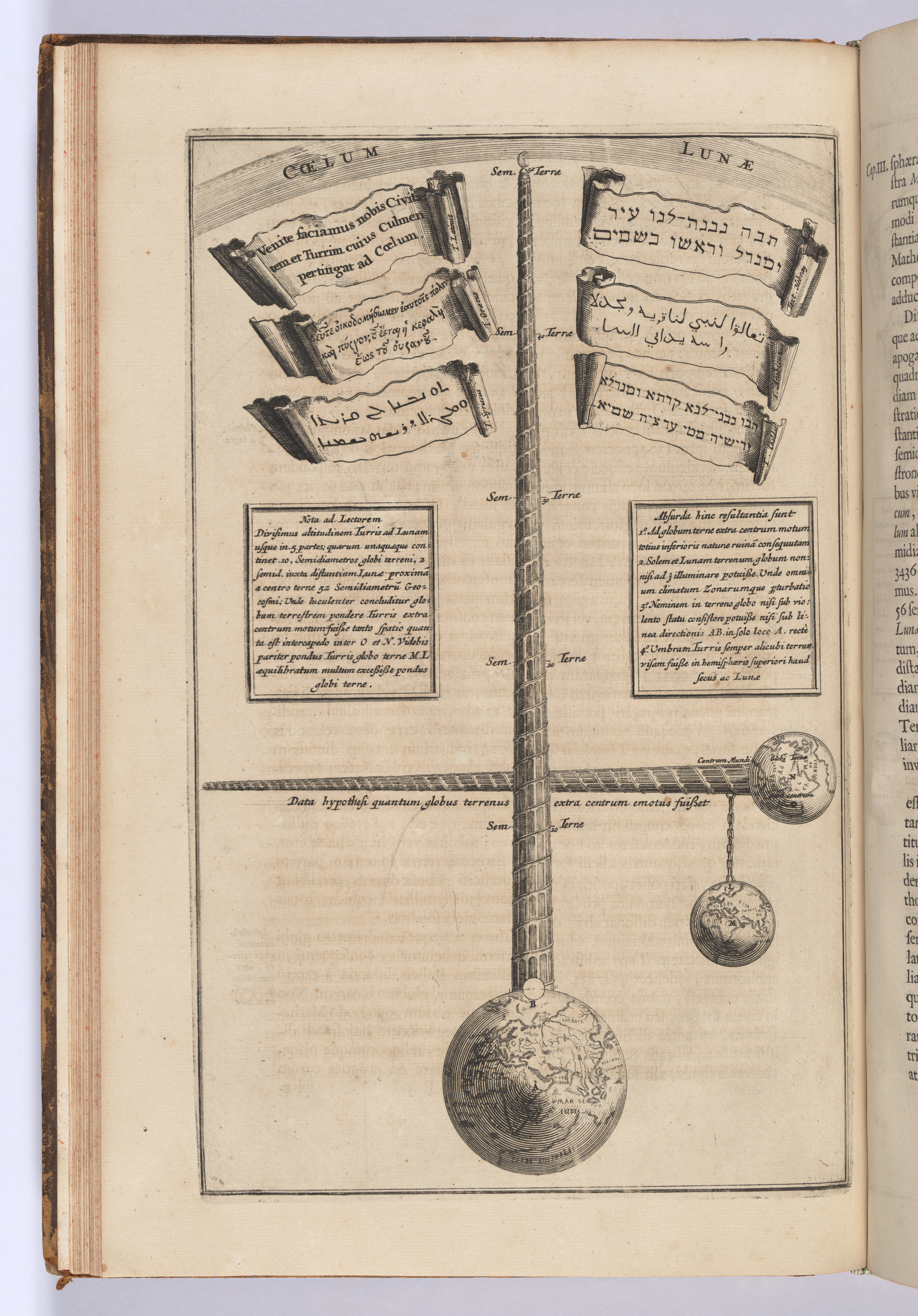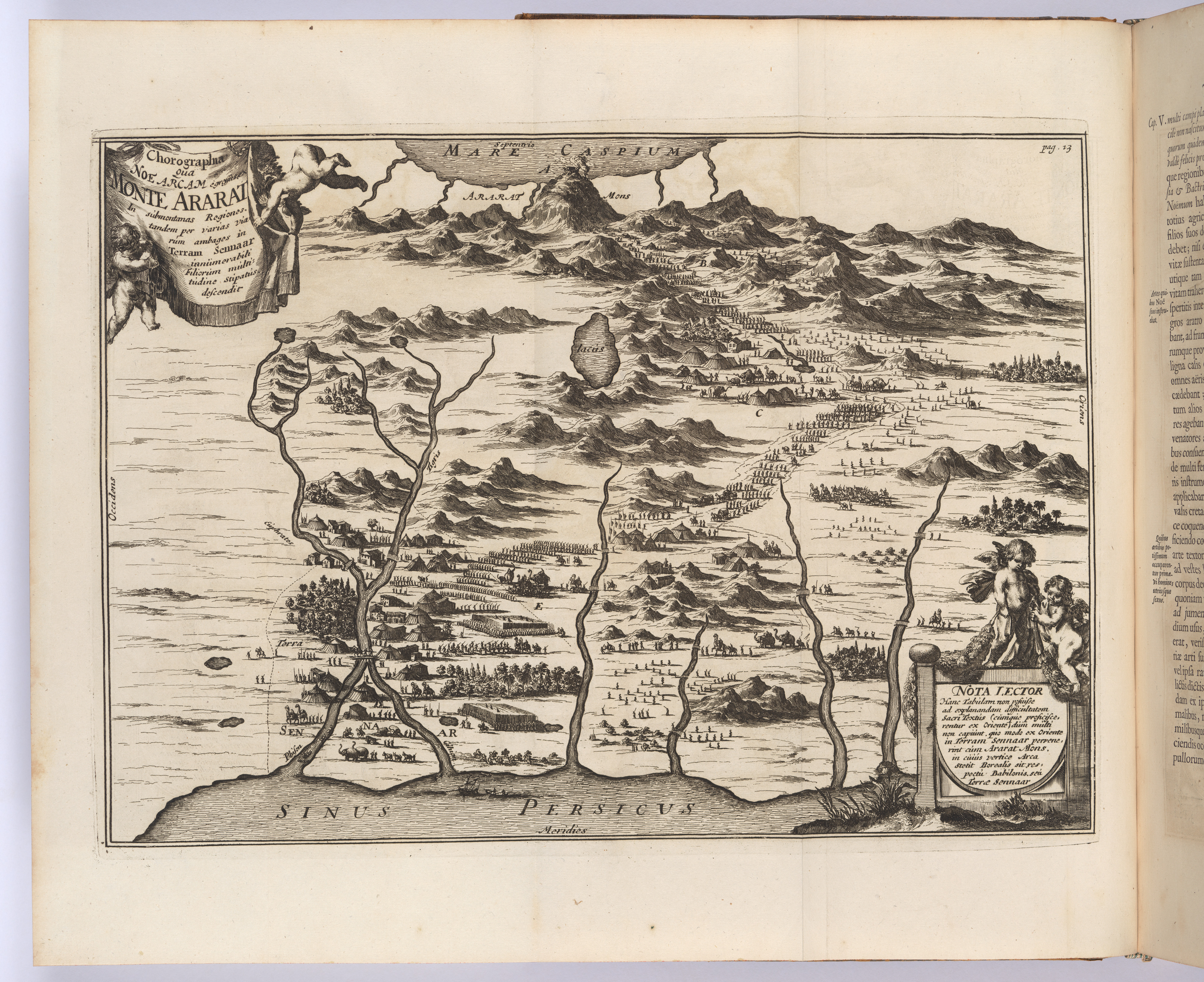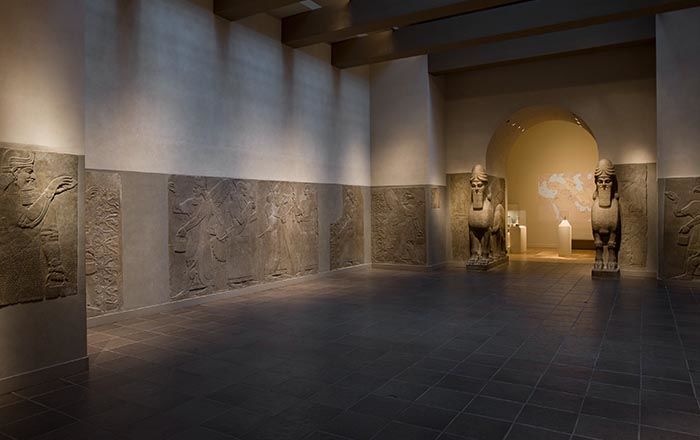Turris Babel
Lievin Cruyl
Coenraet Decker Dutch
Gerard de Lairesse Dutch
Not on view
The polymath Athanasius Kircher was a Jesuit priest whose work on theological questions encompassed everything from antiquarian studies to alchemy. In Turris Babel (The Tower of Babel), Kircher investigated the early history of humanity, reconstructing chronologies based on biblical and classical sources, and the question of the development of languages, starting from a literal interpretation of the Tower of Babel and Confusion of Tongues (Genesis 10). The illustrations, most designed by Lievin Cruyl and engraved by Coenraet Decker, include some of the most influential depictions of Babylon in European art.
The book discusses the building of the Tower of Babel, other ancient monuments including the walls and hanging gardens of Babylon, and the relationships between the world’s languages. Throughout, scientific enquiries combine with theological questions: one famous illustration shows the impossibility of building the Tower of Babel to a height that would enable humanity to scale heaven, with Kircher reasoning that the lowest level of heaven would be the orbit of the moon and from there calculating distance and the quantity of bricks that might be needed, and concluding that the result would tip the Earth off its axis. Other illustrations attempt to reconstruct the city and monuments of Babylon, based purely on details in the textual accounts of biblical and classical authors, alongside images of one of the tells (mounds) of Babylon, based on those produced by an artist accompanying the traveler Pietro della Valle, that became some of the earliest depictions of the physical site to circulate in Europe.
This image cannot be enlarged, viewed at full screen, or downloaded.
This artwork is meant to be viewed from right to left. Scroll left to view more.


